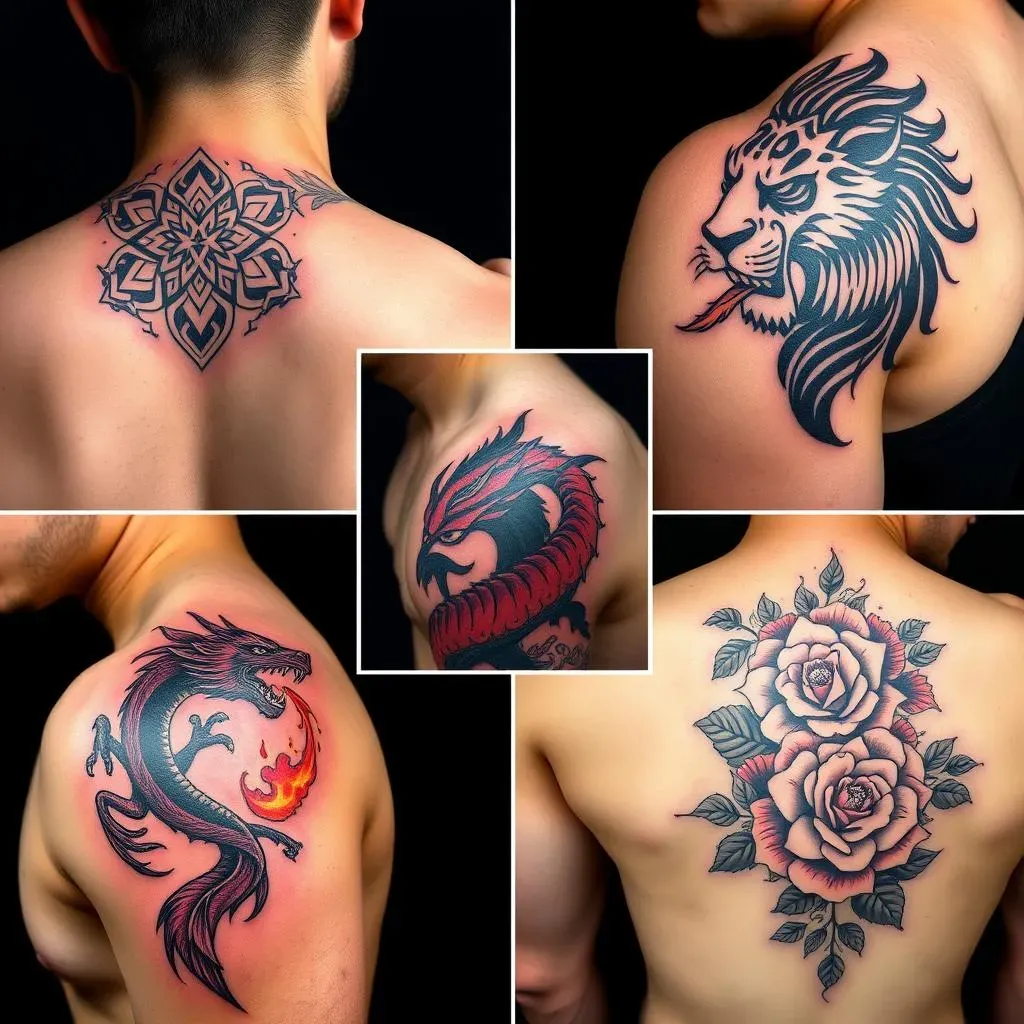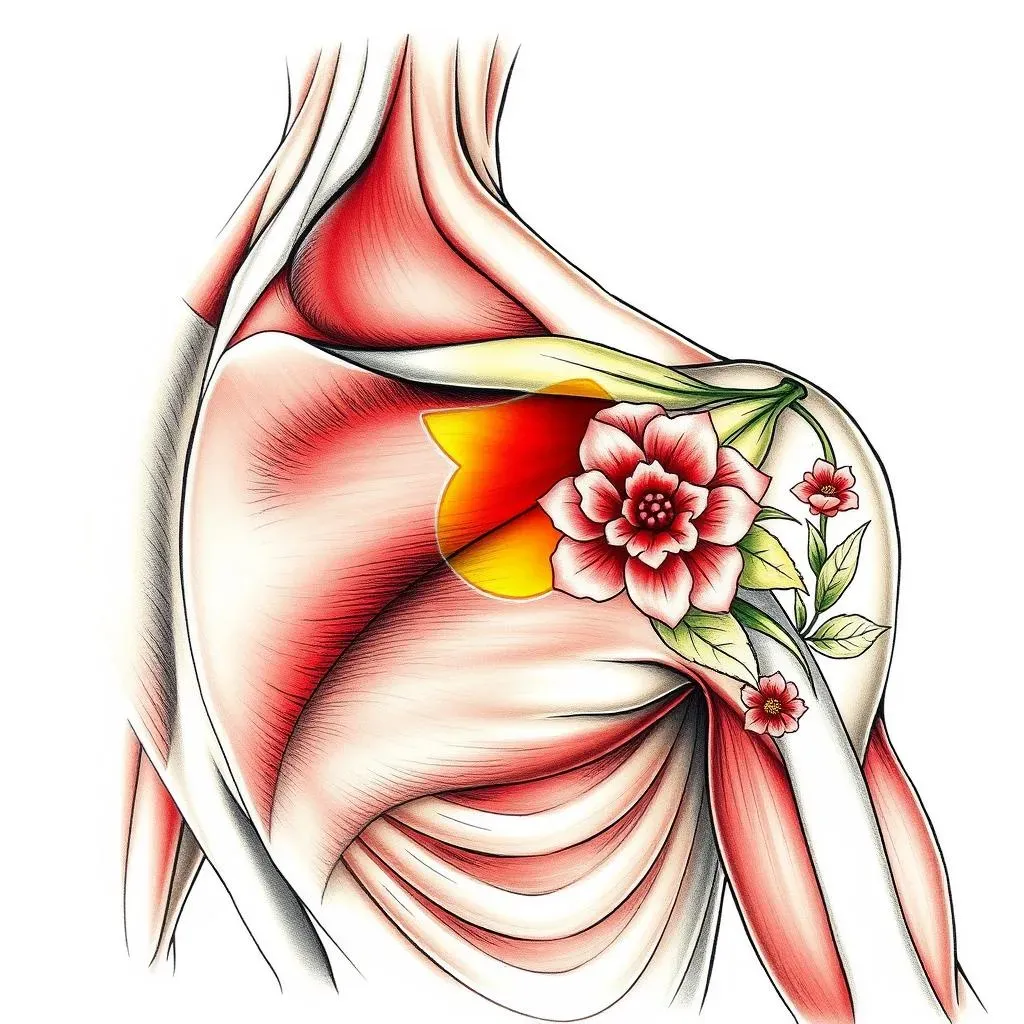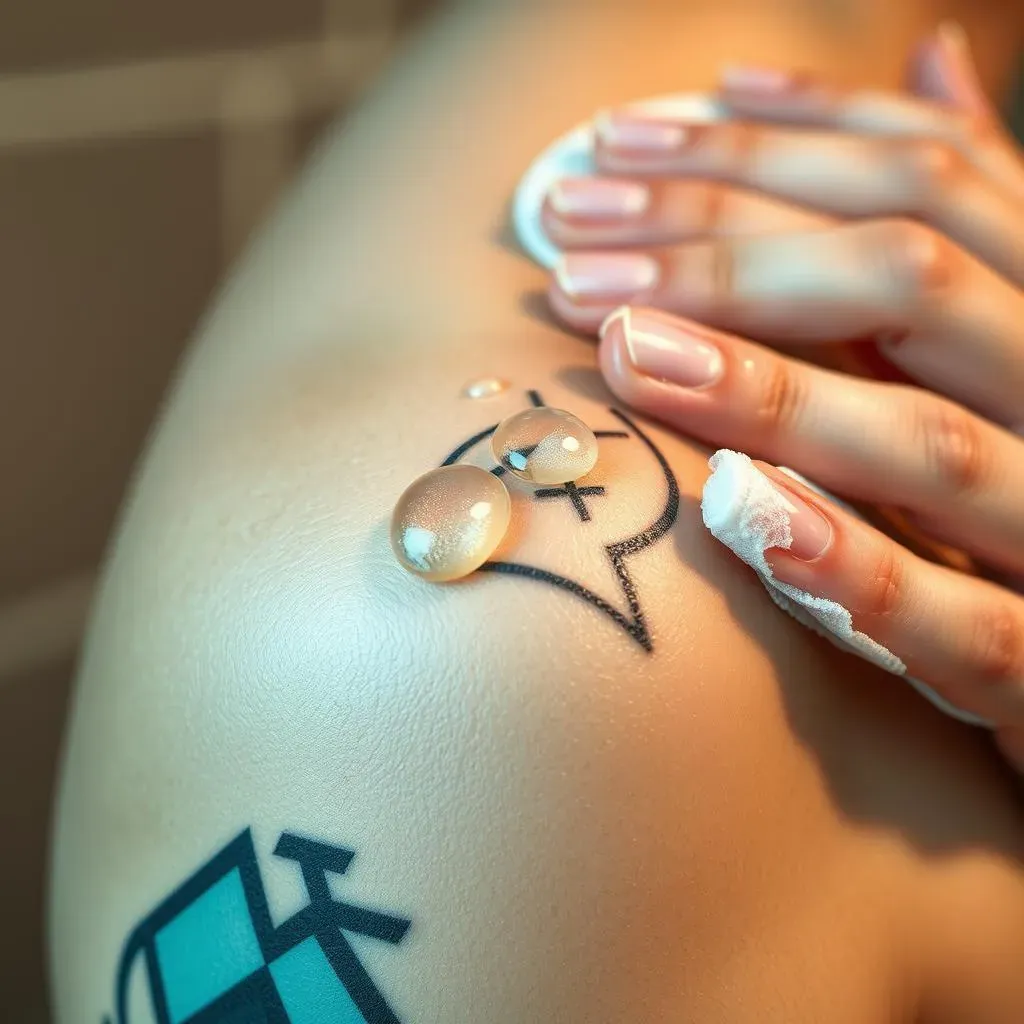Table of Contents
Thinking about getting inked? Shoulder tattoos are a bold statement, but finding the right size is key. Medium shoulder tattoos are hitting the sweet spot for many guys, offering enough canvas for intricate designs without being overwhelming. This article dives deep into the world of medium-sized shoulder art, exploring why they're so popular and showcasing some seriously cool designs to spark your imagination. We'll break down the best designs for men, from fierce mythological creatures to modern geometric patterns, giving you plenty of inspiration for your own piece. But it's not just about the visuals. We'll also tackle the nitty-gritty: what to expect in terms of pain, how to choose the best placement, and the essential aftercare steps to keep your new tattoo looking sharp for years to come. So, whether you're a tattoo newbie or a seasoned collector, get ready to explore everything you need to know about rocking a medium shoulder tattoo.
Finding the Perfect Size: Why Medium Shoulder Tattoos are Trending

Finding the Perfect Size: Why Medium Shoulder Tattoos are Trending
So, you're thinking about a shoulder tattoo, huh? Awesome choice! The shoulder is a fantastic canvas, but let's be real, size matters. Go too small, and your intricate design turns into a blurry mess. Go too big, and you might feel like you're wearing a permanent billboard. That's where medium shoulder tattoos come in – they're the Goldilocks of body art. They offer enough space to showcase detail and creativity without taking over your entire upper body. Plus, they can be easily concealed if needed, making them a versatile option for guys in various professions and lifestyles.
But why are they trending right now? Well, think about it: social media is flooded with tattoo inspiration, and people are becoming more adventurous with their ink. Medium-sized pieces are perfect for capturing attention online – they're visually striking and photograph well. Celebrities and influencers rocking tasteful shoulder tattoos have also fueled the trend, making it a desirable and attainable form of self-expression. It's all about finding that balance between making a statement and maintaining a sense of personal style.
Top Medium Shoulder Tattoo Designs for Men: Ideas and Inspiration

Top Medium Shoulder Tattoo Designs for Men: Ideas and Inspiration
Alright, let's get to the fun part: the designs! When it comes to medium shoulder tattoos, the possibilities are endless. Seriously, your imagination is the only limit. But to get those creative juices flowing, let's look at some popular and eye-catching options that are trending right now. We're talking everything from classic symbols with a modern twist to completely unique custom pieces that tell your story.
- Geometric Designs: Clean lines, sharp angles, and mesmerizing patterns. These tattoos offer a modern and sophisticated look.
- Tribal Tattoos: Bold, black ink designs inspired by ancient cultures. They often symbolize strength, heritage, and connection to ancestors.
- Animal Tattoos: Lions, wolves, eagles – powerful creatures that represent different qualities like courage, loyalty, and freedom.
- Mythological Creatures: Dragons, phoenixes, and other mythical beasts that embody power, rebirth, and transformation.
- Floral Tattoos: Intricate floral designs that add a touch of elegance and beauty. Different flowers can symbolize different meanings.
One thing to keep in mind is how the design flows with the shape of your shoulder. A skilled tattoo artist can create a piece that complements your anatomy, making it look even more impressive. Don't be afraid to bring in reference images and collaborate with your artist to create something truly unique that reflects your personality and style. After all, this is going to be on your body for a long time, so you want to make sure you absolutely love it!
Pain and Placement: What to Expect with Shoulder Tattoos

Pain and Placement: What to Expect with Shoulder Tattoos
The Ouch Factor: How Much Does a Shoulder Tattoo Hurt?
let's talk about the elephant in the room: pain. Getting a tattoo isn't exactly a walk in the park, and the shoulder area has its own set of challenges. The level of pain you experience depends on a few factors, including your pain tolerance, the size and complexity of the design, and the specific location on your shoulder. Areas closer to bone, like the collarbone or shoulder blade, tend to be more sensitive than areas with more muscle. Some people describe the sensation as a burning or scratching feeling, while others say it's more like a dull ache. It's definitely manageable, but it's good to be prepared.
Pro tip: make sure you're well-rested, hydrated, and have eaten a good meal before your appointment. This can help to minimize discomfort. You can also talk to your artist about using a numbing cream, but keep in mind that not all artists are comfortable working with them.
Shoulder Tattoo Placement: Finding Your Sweet Spot
Placement is key when it comes to shoulder tattoos. Not only does it affect the overall look of the tattoo, but it can also impact the pain level and healing process. The upper shoulder, closer to the arm, tends to be less painful and heals relatively quickly. The front of the shoulder offers a good canvas for designs that wrap around the arm, while the back of the shoulder is ideal for larger, more detailed pieces. If you're considering a design that extends onto your chest or back, be prepared for a longer and potentially more painful session.
Consider your lifestyle and clothing choices when deciding on placement. Do you want your tattoo to be easily visible, or do you prefer to keep it hidden most of the time? Think about how the tattoo will look with different necklines and sleeve lengths. A good tattoo artist can help you find the perfect placement that complements your body and showcases your design in the best possible way.
Placement Area | Pain Level (1-10) | Healing Time | Best For |
|---|---|---|---|
Upper Shoulder | 4-6 | 2-3 weeks | Smaller, simpler designs |
Front Shoulder | 5-7 | 3-4 weeks | Wrapping designs |
Back Shoulder | 6-8 | 4-6 weeks | Larger, detailed pieces |
Aftercare Essentials: Ensuring Your Medium Shoulder Tattoo Heals Perfectly

Aftercare Essentials: Ensuring Your Medium Shoulder Tattoo Heals Perfectly
The First Few Days: Gentle Cleansing is Key
Alright, you've got your awesome new medium shoulder tattoo – congrats! But the work doesn't stop there. Proper aftercare is crucial to ensure it heals correctly and looks its best for years to come. The first few days are the most important. Think of your tattoo as an open wound (because, well, it is!). You need to keep it clean and protected from bacteria. Gently wash the tattooed area twice a day with a mild, fragrance-free soap and lukewarm water. Avoid using harsh soaps or scrubbing, as this can irritate the skin and damage the ink. Pat the area dry with a clean paper towel – don't use a cloth towel, as it can harbor bacteria.
After washing, apply a thin layer of tattoo aftercare ointment. Aquaphor is a popular choice, but there are many other options available. Make sure to use a small amount – you don't want to suffocate the skin. The goal is to keep the tattoo moisturized, not slathered in goo. Avoid petroleum-based products like Vaseline, as they can clog pores and interfere with healing.
The Healing Process: Patience is a Virtue
Now comes the hard part: waiting! The healing process typically takes 2-4 weeks, but it can vary depending on your skin type, the size and location of the tattoo, and how well you follow aftercare instructions. During this time, your tattoo will go through several stages, including redness, swelling, itching, and scabbing. Don't panic – this is all perfectly normal! The key is to resist the urge to pick or scratch at the scabs. This can pull out the ink and lead to scarring.
Keep the tattoo moisturized throughout the day, applying a thin layer of ointment as needed. Avoid prolonged exposure to sunlight, as UV rays can fade the ink. If you must be in the sun, wear loose-fitting clothing that covers the tattoo or use a tattoo-specific sunscreen. Also, avoid swimming, hot tubs, and saunas during the healing process, as these can increase the risk of infection. Stick to showers, and try to keep the tattoo out of direct water for extended periods.
Healing Stage | Typical Duration | What to Expect | What to Do |
|---|---|---|---|
Initial Healing | 1-3 days | Redness, swelling, soreness | Gentle cleansing, thin layer of ointment |
Itching & Scabbing | 1-2 weeks | Itching, flaking, scabbing | Moisturize, avoid scratching/picking |
Final Healing | 1-2 weeks | Skin appears dull, colors may fade | Continue moisturizing, protect from sun |
Long-Term Care: Keeping Your Tattoo Looking Fresh
Once your tattoo is fully healed, it's time to think about long-term care. While the hard work is done, there are still things you can do to keep your tattoo looking vibrant and prevent fading. Sunscreen is your best friend! Apply a high-SPF sunscreen to your tattoo whenever you're exposed to the sun, even on cloudy days. UV rays are the enemy of tattoos, and they can cause the ink to fade significantly over time. Moisturize regularly to keep the skin hydrated and prevent dryness. Dry skin can make the tattoo look dull and less defined.
Avoid harsh chemicals and abrasive cleansers, as these can irritate the skin and damage the tattoo. If you notice any changes in your tattoo, such as raised bumps, redness, or excessive itching, consult a dermatologist or your tattoo artist. These could be signs of an allergic reaction or infection. With proper care and attention, your medium shoulder tattoo will continue to look amazing for years to come, a testament to your personal style and a lasting work of art.
Rocking Your Medium Shoulder Tattoo: A Lasting Impression
So, you're ready to take the plunge and get that medium shoulder tattoo? Armed with design inspiration, pain management tips, and aftercare know-how, you're well-equipped to make it a reality. Remember, a tattoo is a personal statement, a piece of art that you carry with you. Choose a design that resonates with you, find a reputable artist, and follow those aftercare instructions religiously. Your medium shoulder tattoo will not only look awesome but will also tell your story for years to come.